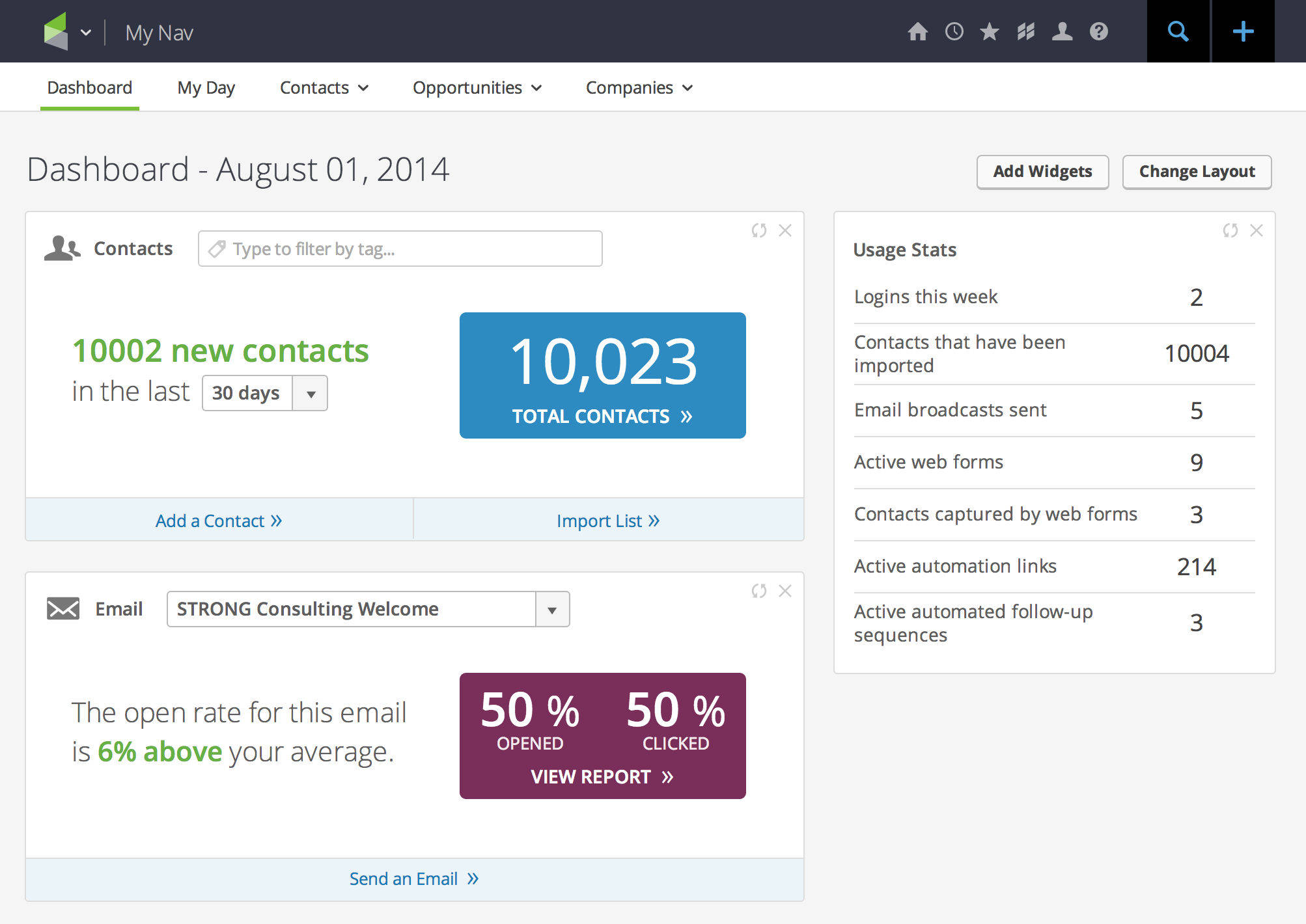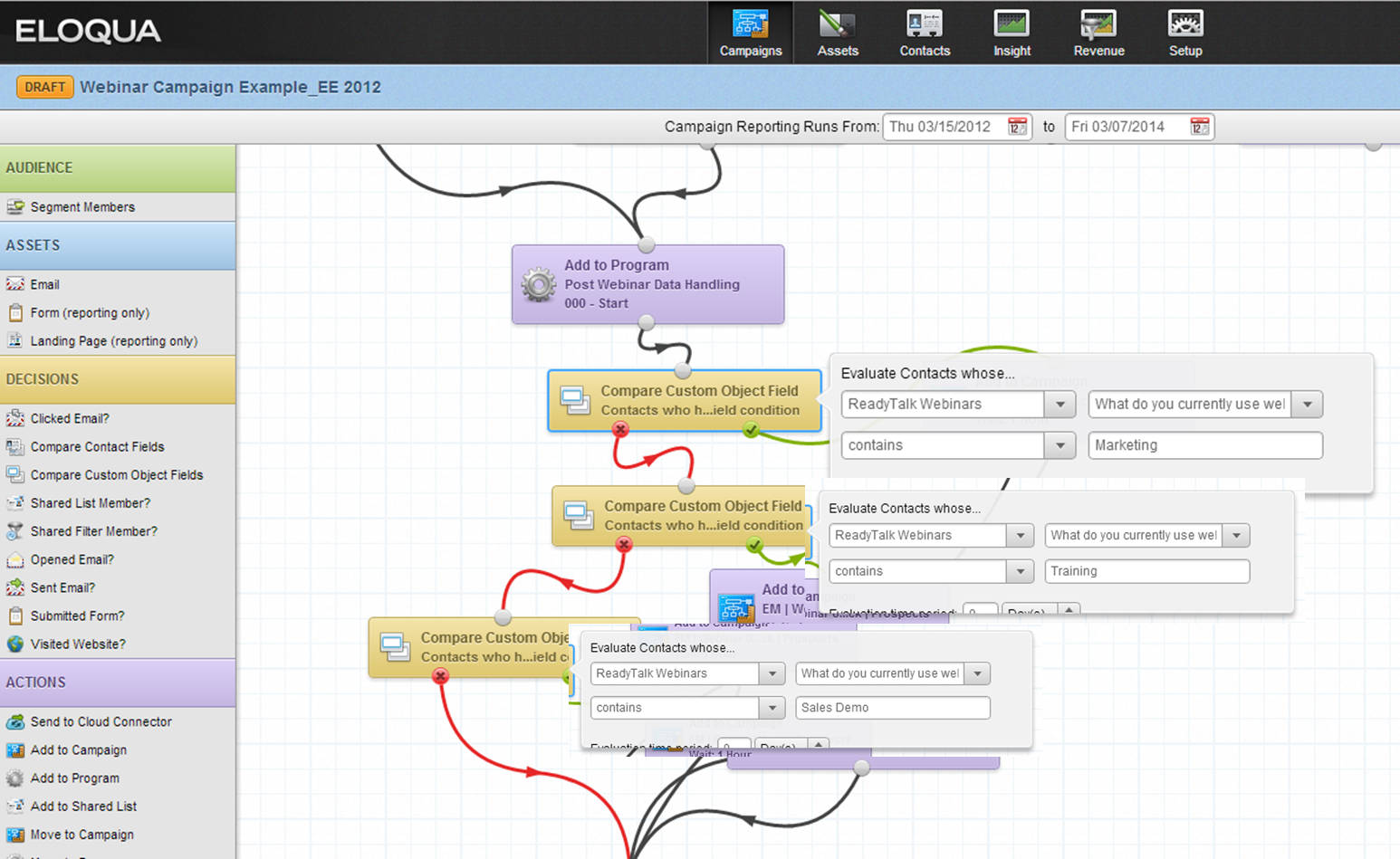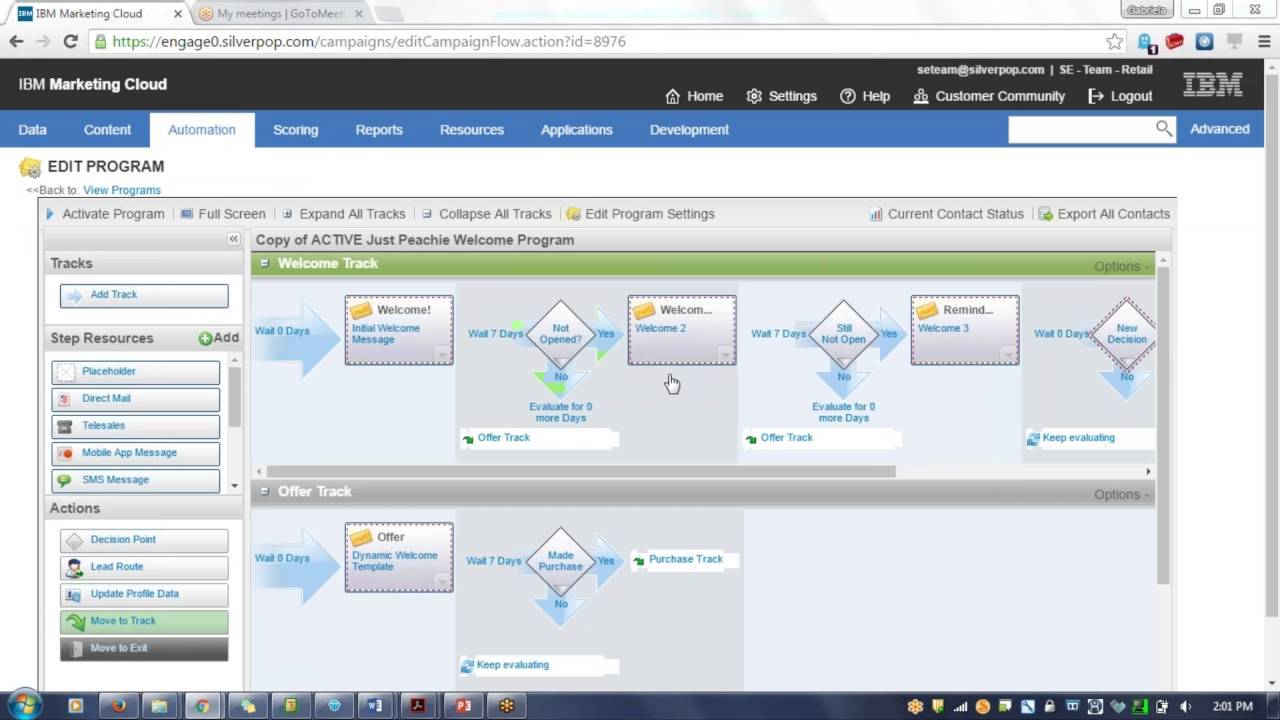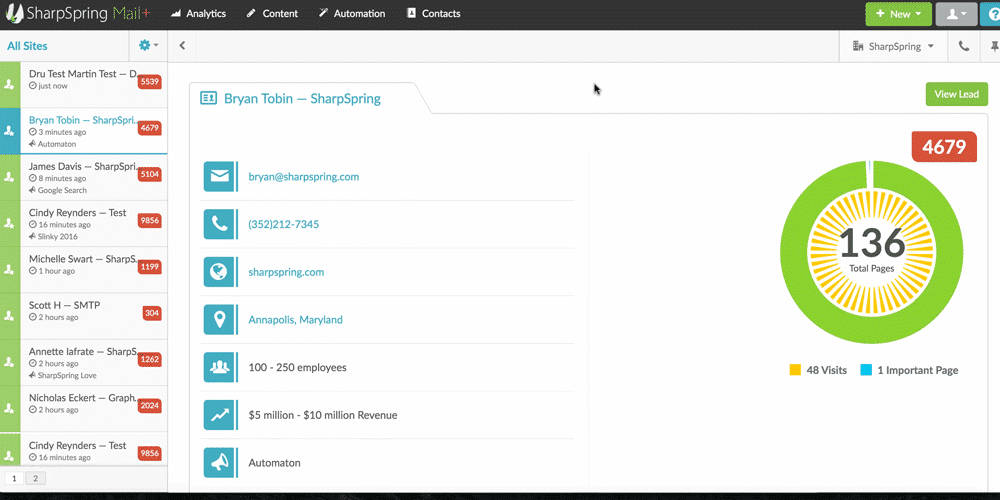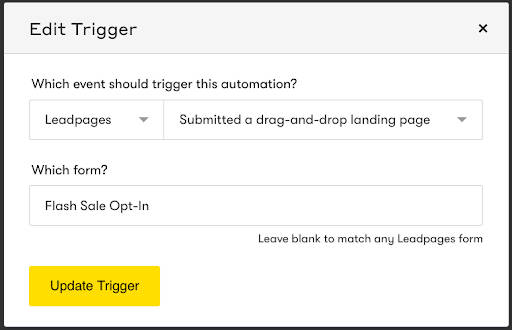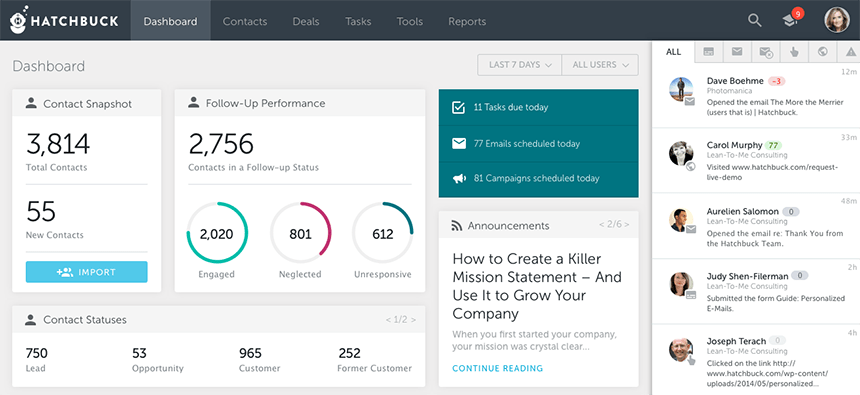In this era of relentless digital marketing, it is not just good, but essential to have marketing automation software. This is because, with consumer preferences evolving constantly, the need for marketing has escalated like never before, to keep a product stay ahead in the run. And it requires a business to be at its marketing best at any given moment, keeping track with every single information of the market, consumer behaviour, product switching and patterns of demand, at a tremendous pace. It is for these; a marketing automation software has become a business’ basic need. And once you start searching options to take your pick, mentions of Hubspot marketing, Hubspot email marketing, Hubspot CRM pricing are indeed obvious.
When it comes to picking a marketing automation software, Hubspot has been an automatic choice for many. But what if Hubspot doesn’t suit your needs and preferences? How about checking the options before you make your choice? But for that, one needs a detailed understanding of what this software is, how it functions and what are the things to consider while deciding on the choice.
Marketing a product requires promoting a product, targeting and engaging consumers, gather and analyse insights of consumer preferences and develop or upgrade product accordingly to suit their demands, driving sales, revenue, growth and profit of the business in the process. In this digital age, marketing automation platform combines and automates all these marketing activities- content creation, driving traffic, picking and managing leads, observing patterns of customer behaviour, email and mobile marketing, analytics, feeding data to sales tools as well as gathering customer feedback- all in one platform, thereby simplifying business operations. And this leads not only to efficiency but enhanced customer experience too!
Choosing a marketing automation software, therefore, depends on certain factors:
- To cater to business growth, the software should accommodate a rise in customer base seamlessly.
- To help you use the software with expertise and in a hassle-free way, it should contain short training modules.
- The software should have flagging facilities available to mark when customers are taking different actions. This would help avert risks of sending wrong emails to people, like ‘end of trial’ mails to someone who hasn’t even started it.
- The software should spam compliance and other online marketing regulations and stay updated on this aspect.
- The software enables customized content and email.
- The software should allow setting workflows for every type of customer interaction on the system- reading a blog, watching video content, writing a note or feedback or even staying dormant.
- The software should track the maximum number of user actions taken. More the number of actions observed, more are data points available for insight.
- The software should connect and integrate seamlessly with third-party platforms and APIs. This is needed because merging with various CRM and external systems with all the tools compatible, is essential.
- The software should empower you to operate with numerous lists with ease and help in hyper segmenting contact information. This would facilitate customizing content according to user needs.
- The software should provide an in-depth analysis of all the available leads.
Keeping in mind these requirements, is Hubspot a good choice? According to its fanbase, Hubspot has been the perfect set of marketing tools that has made digital marketing easy and enjoyable. With its feature-rich website making and abilities to create and engage digital traffic, identify leads and generate insights, Hubspot has successfully helped organizations grow, letting them 10x traffic, leads, customer base and scopes of business.
But people also admit that Hubspot is not a ‘fit for all’ software. In that case, is it better to choose from other options available in the market? Before we start reading about Hubspot alternatives, it’s best to list Hubspot’s advantages and disadvantages first, for easy reference and clear understanding.
Pros: Shallow and quick learning curve helps to gain expertise soon. It’s an all-in-one marketing solution offering clarity in content management.
Cons: Allows anyone to edit content and less customizing options.
Costs: Monthly packages between $200-$2400.
Let us now have a look at the top 10 Hubspot competitors and their features, that would help you compare.
| Software Names | Smooth Integration with apps | Ease of Use | Best Feature |
Monthly Pricing |
| Pardot | Y | Y | B2B Friendliness |
$1000-$3000. |
| Marketo | Y | Y (Requires IT knowledge) | Collaborative tools | $895-$3195 |
| Infusionsoft | Y | Y | CRM | $199-$599 |
| Eloqua | Y | Y (Requires HTML knowledge) | Dynamic reporting | $2000-$4000 |
| IBM Marketing Cloud | Y | Y (Requires HTML knowledge) | Visualization of customer journey | $2000+ range, available on request |
| Sharpspring | Y | Not up to the mark | Unique Visitor Id creation | $400-$800 |
| Lead Pages | Y | Y | Landing page building | $25-$199 |
| WordPress | N | N | DIY marketing tool | Free to $200 |
| Hatchbuck | Y | Y | Customer support | $29-$299 |
A quick glance is not always enough. So, let us now dig out a little more and discuss these Hubspot competitors one by one.
Table of Contents
1. Pardot
The B2B marketing automation software set from Salesforce, best for mid-level to enterprise level B2B organizations.
Pros: Popular for its easy-to-execute features, B2B friendliness, comfortable integration with known apps like Gmail, GotoWebinar, Wistia and smooth analytics available for individual channels and full campaign life cycles.
Cons: Important features are not free. Rather API access, A/B testing, AdWords Integration and Dynamic emailing comes in expensive packages. It doesn’t pick images from social media content automatically and doesn’t have a built-in CMS option. HTML/CSS knowledge is required to build landing pages and there are complaints of the inaccuracy of form views.
Pricing: Monthly packages range between $1000-$3000.
2. Marketo
Simplified, User-friendly and caters well to users’ need from advocacy to churning out measurable results. The software helps in lead management, email marketing, revenue attribution, consumer marketing, etc. Furthermore, it is easy to setup and can also be integrated with Salesforce.
Pros: Tools can be customized based on needs. Offers a collaborative framework and predicts an optimized combination of search, display ads according to budget. The best part is that there are separate products for different platforms. Hence, users need to pay only for the one they are using.
Cons: Less intuitive presentation of analytics.
Costs: Customized quotes according to usage requirements.
3. Infusionsoft
Less costly and caters to startups and small businesses. Known for its powerful CRM platform and simplified functioning and thus suited for e-commerce business.
Pros: Ease of creating campaigns, quick accessibility to favourite apps and integrated CRM with an array of e-commerce tools like storefront, order history and cart.
Cons: Compulsory Kick-starter fee payable and expensive. Integrating with 3rd party apps is enabled only at extra cost. Not comfortable for B2B, marketers and less email delivery capability. Email syncing with CRM platforms is not allowed as no Mac-Plugin is available.
Costs: Packages range between $199-$599 monthly.
4. Eloqua
Marketing cloud solution from Oracle with its dynamic reporting aligned with Oracle Business Intelligence. It’s best for full-fledged marketing campaigns.
Pros: Offers canvas style layout for campaigns and connects with over 500 partners including WebEx and SalesForce. Realtime insights, Predictive analytics and Advanced Listener Framework help to deliver strong, specific and timely responses and detailed analysis.
Cons: Needs HTML knowledge for ease of use. Bugging is a problem and reporting is difficult.
Costs: Monthly packages between $2000-$4000.
5. IBM Marketing Cloud (Silverpop)
Popular in the digital marketing world for its visualizing power of customer’s journey and cross channel experience between email, mobile, web in terms of sharing data. Suited for large companies mostly.
Pros: Advanced visualizing abilities help in business strategies. Known for its strong reporting and analysis, realtime customization of content and easy alignment with CRM and different apps.
Cons: Less personalized reporting and no email testing option. Requires HTML knowledge and technical expertise.
Costs: Monthly packages in $2000+ range, available on request only.
6. Sharpspring
Known for unique visitor ID creation, frequent new feature roll-outs, customer service and cheap tools, it’s best for small businesses and agencies.
Pros: Lower price and availability of all features in all packages. Customized lead scoring, easy integration with Google AdWords and smooth page building and short time contracts, suited for agencies.
Cons: No scope of social media posting or SEO recommendations. Reporting, emailing and land page building is not up to the mark.
Costs: Packages priced between $400-$800 monthly.
7. Leadpages
It is considered best in landing page building, known for its wide choice of templates and simple interface and suited to small businesses with lesser knowledge in technology. The reason that this landing page builder software deserves attention here is the fact that it can be integrated with Drip, which assists in marketing automation. It helps to keep all the customers’ data in one place. Drip is known for its well-crafted system of organising contacts. Even if a customer has opted for multiple times for different services, Drip will keep only one entry for that. The campaign designing module offers you to build customised email templates. With the ability to build sterling landing pages with Leadpages and productive campaigns with Drip, you can make your business to take great leaps.
Pros: 144+ template options with tracked usage, split testing facility for landing pages and connect with major email marketing services. Automate your email campaigns with the integration of Drip.
Cons: No countdown timer for landing pages and interruptions in new feature roll-outs.
Costs: Monthly packages between $25-$199.
8. Hatchbuck
A relatively new software, providing CRM and sales automation, marketing automation, email marketing and integrations, known for its good customer services.
Pros: Easy execution, automated lead scoring and strong customer support.
Cons: Service glitches and problems with CRM.
Costs: Semi-annual packages $29-$299.
Getting to know the benefits, drawbacks and pricing, it’s now easy for anyone to compare the available market automation software options. Based on the business requirement, ease of use and budget, it’s indeed time to take your pick!


